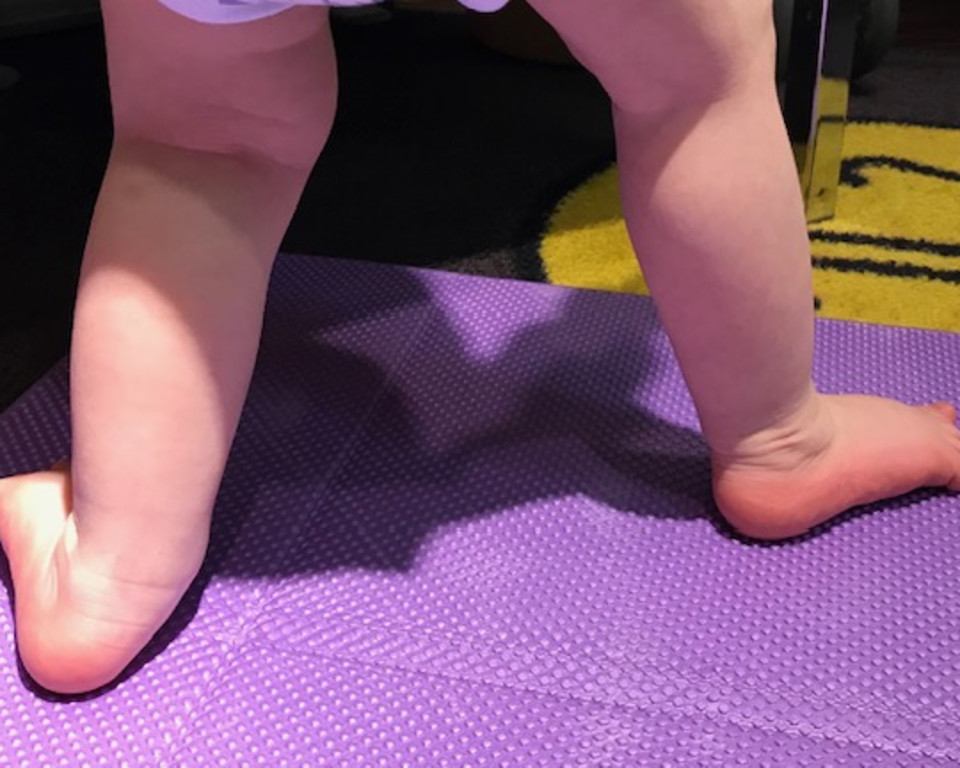Children’s Feet
The first few years of your child’s foot development is crucial, as the bones in their feet are made of soft cartilage which gradually convert to bone over a period of time. It is therefore essential that your child's feet are looked after from birth to ensure they are fit for life.
Babies are born with only 22 bones in each foot, but by the age of 5, it increases to adult 26 bones. Skeletal (bone) maturity does not occur until approximately 13-15 years (female) and 15-18 years (male). When children first start walking, it's normal for them to walk with their feet apart and their arms stretched out to help them balance. It's also common for young children to appear bow-legged or knock-kneed, or walk with their toes turned in or out. Most minor foot problems in children correct themselves.
What to look for
Your child may display the following:
- Bow legs – before the age of 18 months, it is very common for children have a small gap between their knees and ankles when they stand. If the gap is pronounced or doesn't correct itself, check with your GP or health visitor. This could be a sign of Rickets (a bone deformity), although this is very rare.
- Knock knees – this is when a child stands with their knees together and there's a gap between their ankles. Knock knees usually correct themselves by the age of 7.
- In-toeing – also known as pigeon toes. This is where a child's feet turn in. The condition usually corrects itself by the age of 8 and does not require any treatment.
- Out-toeing – this is where the feet point outwards. Again, this usually corrects itself and treatment isn't needed in most cases.
- Flat feet – if your child appears to have flat feet, don't worry. Flat feet usually correct themselves by the age of 6.
- Tiptoe walking – it's common for children aged 3 and under to walk on their toes.

Growth Spurts
Feet grow rapidly in the first year of a child's life reaching almost ½ their adult size. By 12 years of age a child's foot is almost 90% of its adult size. Growth spurts or rapid phases of growth tend to happen between 8-12 years for girls and 10-14 years for boys. These ages tend to mark a rapid outgrowing of shoes, orthoses and socks and make the child seem more awkward and clumsy as they grow into their feet (and body).
Do’s and Don'ts
Do not rush to get babies or toddles into shoes. Barefoot walking should be encouraged as much as possible; this helps with proprioception and proper foot development.
Once a child starts walking or running unaided, try not to put them into pushchairs or use scooters or other aids long term. Always have your children’s feet measured by a qualified shoe fitter. Please do not be tempted with cheap inferior footwear.
Precautions
It's important that shoes and socks are of the right size:
- Shoes should have laces, a buckle or a Velcro fastening so that they hold the heel in place and stop the foot slipping forward and damaging the toes.
- Make sure the soles of the shoes are not too thick, too padded or have any internal memory foam insoles.
- If possible, buy shoes made from natural materials such as leather, cotton or canvas, as these allow air to circulate. Plastic shoes make feet sweaty and can rub and cause fungal infections.
If you still have any concerns, please talk to your podiatrist.
© Walkwel Ltd 2025.
Registered in England #08928649
Registered VAT Number: GB121089836
An indicoll website
Privacy PolicyCookie PolicyDisclaimerAccessibility
